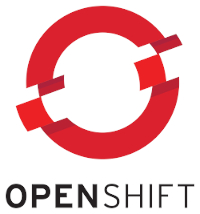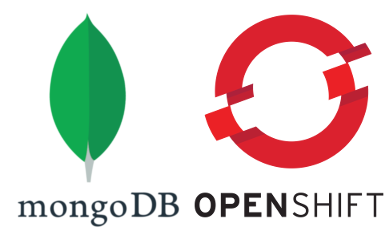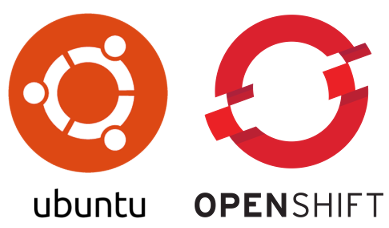
So you have this nifty web application deployed on your OpenShift cluster and you want to make it accessible by the whole world with HTTPS under the name coolapp.<mydomain>. Unfortunately you face several issues:
Exposing the service to your web application leaves you with a route using the self-signed certificate that was generated during setup of the cluster. None of the browsers in the wild will trust this certificate.
The self-signed certificate dictates URLS of the form https://<appname>.apps.<clustername>.<mydomain> (or whatever domain suffix you configured). Not very nice.
You might mitigate the previous issues by getting an official certificate signed by a generally trusted institution. But you will have to pay for it.
And you will have to pay for it not only once but every year (latest every 389 days) thanks to recently tightened certificate policies installed by all major browser vendors.
Worst of it all: You must not (by any means) forget to apply for a new certificate in a timely manner and replace the certificate in your route before the old expires. Otherwise some people might get pretty angry about you.
Let’s Encrypt to the rescue!

During a discussion with a customer, we talked about which steps are necessary to add an application to a services mesh. Which should be no big deal. Unfortunately, there is not a simple guideline how to do that for the Red Hat OpenShift Service Mesh. Furthermore, I was not sure how the requests for the application would look like in Jaeger. To clarify these points, I created a small application. Which I then deployed on OpenShift and added it to a service mesh control plane. This is the documentation of the steps that I have done.
| Author: | Olaf Meyer |
|---|---|
| Tags: | openshift, kubernetes, istio, jaeger, kiali |
| Categories: | development |

During this year’s Red Hat Summit I had the chance to get a glimpse of the latest version of Kiali. This version had some nice features, like the traffic flow of the application graph during a time period (Graph replay). It also contains wizards to create destination rules and virtual services. This demo has struck my curiosity to get the hands on this Kiali version. One obstacle for me was that my Kiali is running in Red Hat OpenShift Service Mesh and is controlled by the Kiali operator. Currently, it is using version 1.12. The version that I wanted to try was the latest release version (1.17). The Red Hat OpenShift Service Mesh does not support this version. This article describes what we need to do in order to replace the Kiali version of an Red Hat OpenShift Service Mesh with the latest version of Kiali.
| Author: | Olaf Meyer |
|---|---|
| Tags: | openshift, kubernetes, istio, kiali |
| Categories: | development |

Some time ago, I did a webinar about the RedHat Service Mesh, which is based on Istio. For this webinar, I prepared a demo application. Among other things, I wanted to show how to do the authentication with JWT token in general and, more specific, with Keycloak. This article will describe how to configure Keycloak. In the second article, I will show you what problems I encountered running the application in Istio and how I figured out what was wrong in my configuration. You can find the article here
| Author: | Olaf Meyer |
|---|---|
| Tags: | openshift, kubernetes, istio, keycloak |
| Categories: | development |

In the article, I’m going to describe what we can do, if we configured our application to use Istio, but it is not working like intended. Originally, I wanted to give a detailed description what problems I encountered during the creation of my webinar and how I fixed them. However, I came to a point where this would be a very long one. I hope that you don’t mind that I shortened it and just describe which tools are available to debug the Istio configuration. In my previous article I described how to configure Keycloak for my webinar. So without further ado, let’s start.
| Author: | Olaf Meyer |
|---|---|
| Tags: | openshift, kubernetes, istio, keycloak |
| Categories: | development |

In this article, I will show you how to install Red Hat OpenShift Container Platform 4.3 (OCP) on VMware vSphere with static IPs addresses using the openshift installer in UPI mode and terraform. In contrast to the official OpenShift 4.3 install documentation, we will not use DHCP for the nodes and will not setup the nodes manually - instead we will use static IP addresses and terraform to setup the virtual machines in our vCenter.

So here is another one of our series Installing Blahblahblah on OpenShift. This time it is about getting MongoDB to run on OpenShift - the way recommended and promoted by the MongoDB guys. The whole setup is still in beta stage as indicated on these two entries in Red Hat’s container image catalog. You can get your MongoDB instance up and running on OpenShift. But most of the required steps have to be performed on the command line, contrary to the impression given by MongoDB, Inc that once you get the MongoDB Operations Manager up and running everything can be achieved via this tool’s GUI. Some operations in the Operations Manager simply do not work (yet) on OpenShift.

With the release of OpenShift 4.x Red Hat left no stone unturned (compared to previous 3.x versions). Among many things Minishift became Red Hat CodeReady Containers. Having been a big fan of Minishift I recently wanted to give CodeReady Containers (aka CRC) a try.
Turned out this is not that easy - at least if you want to run CRC on a Linux that does not come from Red Hat (or its community). This article gives instructions for all those people out there who want to run CodeReady Containers on Ubuntu.
Update 2020-12-17: According to this comment on GitHub by one of the maintainers / developers of Red Hat CodeReady Containers the issues with Ubuntu have been resolved in the latest version of CRC.

AWS Cloud Development Kit (CDK) is a relatively new kid on the block. It is a tool for defining Infrastructure as Code (IaC) and is considered to be the future successor of AWS CloudFormation.
This article overviews the IaC approach, introduces a reader to the AWS CDK, shows what problems it aims to solve and presents a simple example application implemented with it.
| Author: | Alexander Ryndin |
|---|---|
| Tags: | AWS, AWS-CDK, AWS-Lambda, Infrastructure-As-Code |
| Categories: | development |

GraphQL is a nice way to publish a highly customizable API. In combination with Spring Boot, which makes development really easy and offers features like database integration and security, you can quickly build your API service from scratch.
This is the second part of the series in which we will create a REST-Service based on Spring Boot which will be translated in a GraphQL Service in the 3rd part of this little series.
| Author: | Andy Degenkolbe |
|---|---|
| Tags: | SpringBoot, GraphQL, API, API Transformation, Spring Security |
| Categories: | development |